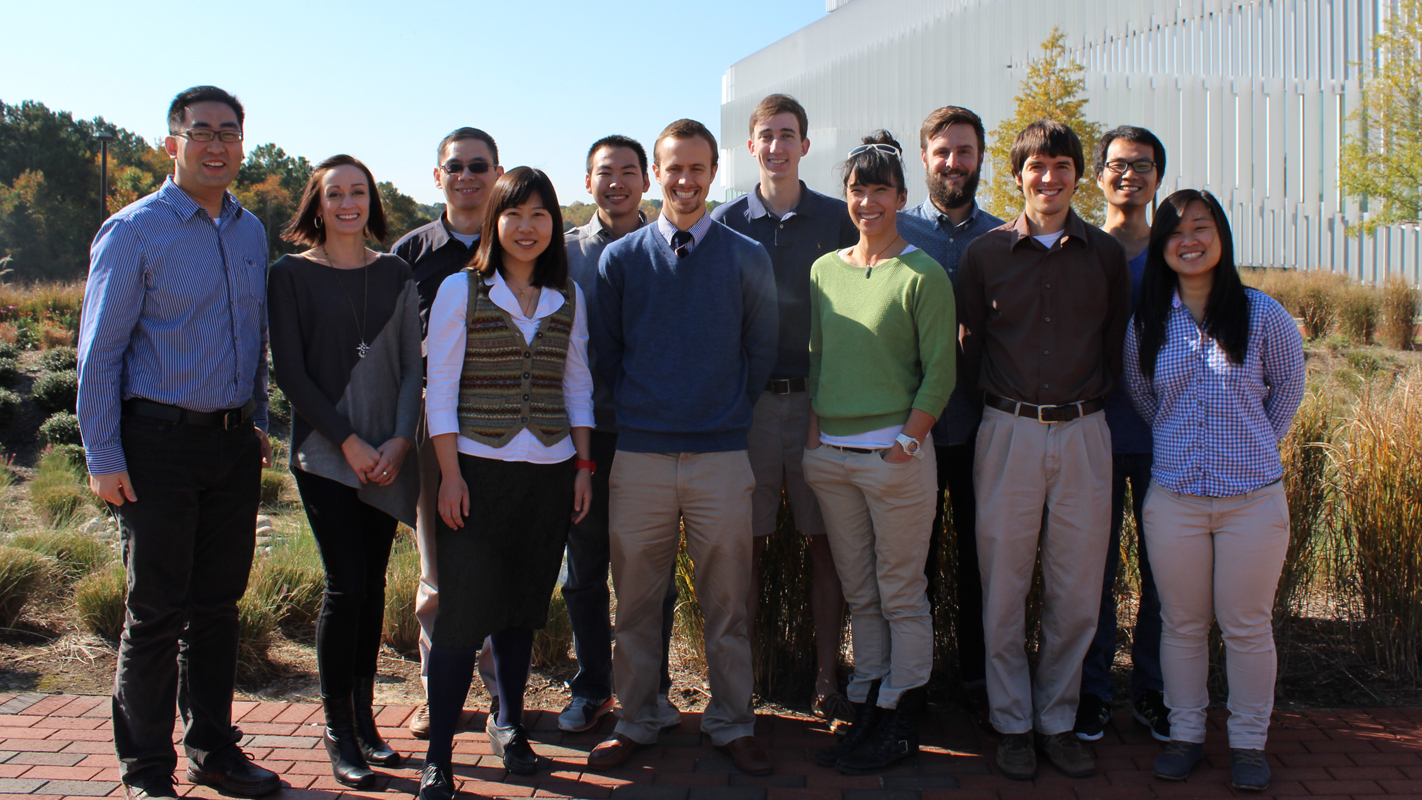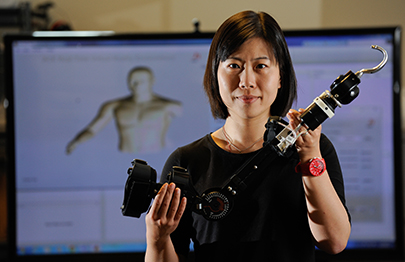This Is What Science Looks Like at NC State: Helen Huang

Editor’s note: This post was written by Helen Huang, an associate professor in the joint Department of Biomedical Engineering at NC State and UNC-Chapel Hill. The post is an entry in an ongoing series that we hope will highlight the diversity of researchers in science, technology, engineering and mathematics. The series is inspired by the This Is What A Scientist Looks Like site.
My name is He (Helen) Huang. I am an associate professor in the Joint Department of Biomedical Engineering at NC State University and UNC-Chapel Hill and the director for the NCSU/UNC Rehabilitation Engineering Core. I grew up in Beijing, attended college in Xi’an (China), received my master’s and Ph.D. from Arizona State University, and worked at the Rehabilitation Institute of Chicago (the number one rehabilitation hospital in the U.S.) and University of Rhode Island before I joined NC State.

I direct the Neuromuscular Rehabilitation Engineering Laboratory, located on the Centennial Campus at NC State. My research team consists of talented and hard-working students, engineers, and scientists in biomedical, electrical, and mechanical engineering. Research in my lab focuses on the study of human motor control in healthy persons and individuals with sensorimotor deficits, human-robot interaction, neural-machine interfaces, and prosthetics and orthotics.
Recently, my team has developed novel neural-machine interfaces for artificial legs and arms, which enable limb amputees to operate their prosthetic devices intuitively and efficiently. The research team works closely with physicians, prosthetists and orthotists, physical therapists and occupational therapists, and patients with physical disabilities. The research goal in my lab is to improve the quality of life of people with physical disabilities.
Using robotic technologies to restore movement functions of individuals with disabilities has been a perfect research area for me because I have been passionate about robots since I was little, and I am always eager to find ways to help people with disabilities. Throughout my academic career, the most rewarding moments for me are the times when I saw that our spinal cord stimulator enables a person with incomplete spinal cord injury to walk again; our developed neural-machine interface allows a patient with bilateral shoulder disarticulations to operate a prosthesis to perform activities of daily living (e.g. eating, drinking, buttoning, etc.) independently; and our neurally-controlled artificial legs permit above-knee amputees to adapt to various walking terrains smoothly and safely.
Beyond research, I like to spend efforts to promote STEM to K-12 students, especially females, minorities, or students with disabilities. With help from the Engineering Place at NC State and students in the BME department, I regularly organize field trips and summer internships for middle/high school students and give talks at local museums. I want to use these opportunities to excite students to pursue education and career in science and engineering to better shape the future of the nation.
Of course, life is not all about research and work. I believe in work hard and play hard. Outside of the lab, I enjoy my time with my husband, an electrical engineer, and two children: Isabel and Eric, who are curious and like reading and exploring.
- Categories:


